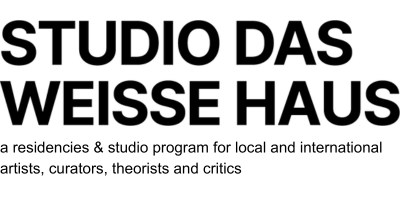Weekly Conversations… with Julianne Cordray

This week we talk to writer and editor Julianne Cordray, who is based in Berlin, Germany. However, as our Critic in Residence in cooperation with VIENNA ART WEEK she is currently staying in Vienna, where she arrived a few days before the second Lockdown was announced. Nevertheless, VIENNA ART WEEK is taking place online, and Julianne will definitely have something to write about.
Interview by Juliana Furthner
Photo: Julianne Cordray
Congratulations for persuading the jury and welcome again, Julianne! How have your first two weeks at studio das weisse haus and in Vienna been?
Thank you! It’s been really nice to be at studio das weisse haus, and in Vienna. Both have been very welcoming.
Though it’s also a strange and challenging time to be here, it has been rewarding and stimulating to spend time in a new place, to be outside of my usual surroundings, and to be able to build a new routine. I think this is also important right now.
During your stay you will publish three blog posts about the Vienna Art Week. Are there any projects or themes that already caught your attention and might be the subjects of your texts?
Yes, for sure! Things have likely changed a bit, now that the Vienna Art Week program will go digital to adapt to the lockdown restrictions. But from the initial program, I was particularly interested in Roberta Lima’s installation Ghost Plant, the exhibition, Queer Anatomy, as well as the performative installation Entangled Speech by Klaus Spiess and Lucie Strecker.
In terms of themes being addressed in Vienna Art Week’s programming, I am particularly interested in connectivity and productivity — what these terms mean beyond the impact of the current situation, and alternative ways for thinking about what they could mean: what ‘being productive’ or ‘staying connected’ could potentially look like.
What is your personal approach to writing about art?
I would say my approach has changed over the years. My background is in art history, so I started out with a very academic approach. But this can be quite limiting — there can’t be just one absolute narrative or perspective, as the ‘authority’ of an academic approach often suggests. Since co-founding a magazine, textur, in 2018, I’ve been working through other approaches in my publishing routine — sometimes more personal, sometimes more experimental, poetic or fictional. Basically, I try to keep myself open, and even begin to think about art writing as artistic practice in itself. There are changes in the way art is produced, studied, exhibited, etc., and art writing should respond to that, as well.
